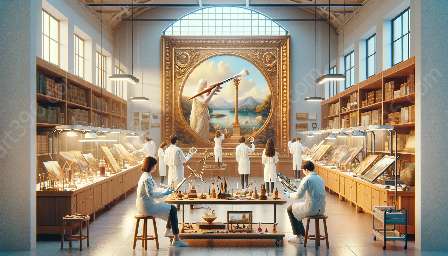Art authentication is a crucial aspect of preserving cultural heritage and ensuring the integrity of art collections. The field of conservation science plays a significant role in this process, leveraging scientific methods to authenticate and preserve artworks. This article explores the contribution of conservation science to art authentication and its impact on future trends in art conservation.
The Role of Conservation Science in Art Authentication
Conservation science encompasses various scientific disciplines, including chemistry, physics, and materials science, to study and preserve cultural artifacts. When it comes to art authentication, conservation scientists use advanced analytical techniques to examine the materials, techniques, and stylistic characteristics of artworks. Through a combination of non-invasive imaging, spectroscopic analysis, and material studies, conservation scientists can determine the authenticity of art pieces, identify alterations or forgeries, and assess the condition of the artwork.
Impact on Future Trends in Art Conservation
The use of conservation science in art authentication has significant implications for the future of art conservation. As technology continues to advance, conservation scientists have access to increasingly sophisticated tools and methods for analyzing artworks. This allows for more accurate and comprehensive authentication processes, enabling art conservators to make informed decisions about treatment and preservation strategies.
Furthermore, the integration of conservation science with emerging technologies, such as artificial intelligence and machine learning, holds promise for enhancing the authentication and conservation of artworks. These technologies can streamline the analysis of large datasets, assist in identifying patterns or anomalies in art pieces, and contribute to the development of innovative conservation methods.
Significance of Art Conservation
Art conservation is essential for preserving our cultural heritage and ensuring that future generations can appreciate and study artworks from the past. By leveraging the findings and methodologies of conservation science, art authentication plays a pivotal role in safeguarding the integrity and value of art collections, preventing the proliferation of forgeries, and promoting transparency in the art market.
Conclusion
Conservation science's contribution to art authentication is indispensable in upholding the authenticity and longevity of artworks. As advancements in conservation science continue to shape the future of art conservation, the integration of innovative technologies and interdisciplinary approaches will further enhance the field, ultimately serving the preservation and appreciation of art across generations.

